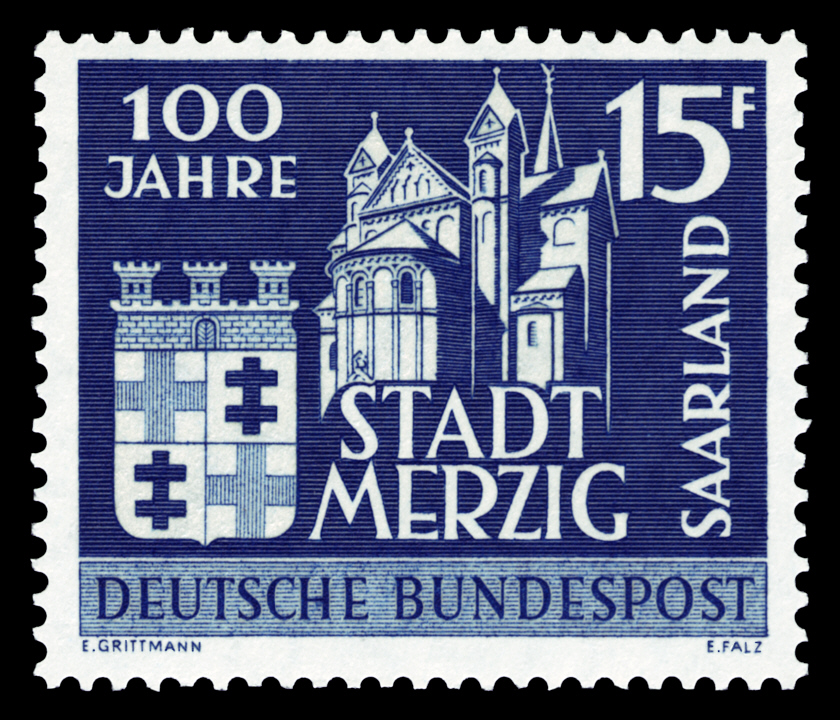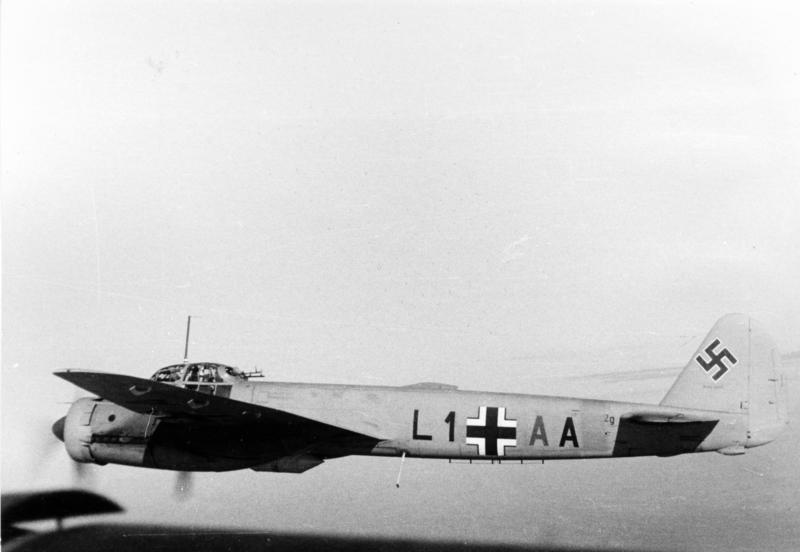|
Rudolf Pflanz
Rudolf Pflanz (1 July 1914 – 31 July 1942) was a German Luftwaffe fighter pilot and recipient of the Knight's Cross of the Iron Cross during World War II. Pflanz claimed 52 aerial victories, all of them over the Western Front. Early life and career Pflanz was born in July 1914 in Ichenheim, present-day part of Neuried, at the time in Grand Duchy of Baden of the German Empire. He joined the Luftwaffe and by 1938 was serving with ''Jagdgeschwader'' 131 (JG 131—131st Fighter Wing), which on 1 May 1939 was redesignated ''Jagdgeschwader'' 2 "Richthofen" (JG 2—2nd Fighter Wing). World War II World War II in Europe had begun on Friday 1 September 1939 when German forces invaded Poland. Pflanz claimed his first aerial victory on 30 April 1940 during the early Phoney War period over a Potez 63 northwest of Merzig. At the time, Pflanz was serving with 3. '' Staffel'' (3rd squadron) of JG 2 which was commanded by ''Hauptmann'' Henning Strümpell. The ''Staffe ... [...More Info...] [...Related Items...] OR: [Wikipedia] [Google] [Baidu] |
Neuried
Neuried ( gsw, label=Low Alemannic, Neiriäd) is a municipality in the district of Ortenau in Baden-Württemberg in Germany Germany,, officially the Federal Republic of Germany, is a country in Central Europe. It is the second most populous country in Europe after Russia, and the most populous member state of the European Union. Germany is situated betwe .... Ortsteile * Altenheim * Dundenheim * Ichenheim * Müllen * Schutterzell References Ortenaukreis {{Ortenaukreis-geo-stub ... [...More Info...] [...Related Items...] OR: [Wikipedia] [Google] [Baidu] |
Merzig
Merzig (, french: Mercy, ''Moselle Franconian:'' ''Meerzisch''/''Miërzësch'') is a town in Saarland, Germany. It is the capital of the district Merzig-Wadern, with about 30,000 inhabitants in 17 municipalities on 108 km². It is situated on the river Saar, approx. 35 km south of Trier, and 35 km northwest of Saarbrücken. History Evolution of the name In addition to the above, the city was known under French rule as ''Mercy''. Subdivisions Merzig was created in 1974 as part of the territorial reform in Saarland. The present-day town consists of the previous town of Merzig and 16 surrounding former municipalities. The population of the present town, including all outlying districts (as of June 30, 2011): Culture and sights Museums * Expeditionary Museum Werner Freund * Fine mechanical museum in the Fellenbergmühle * Museum of Local History in Fellenberg Castle * B-Werk Besseringen * Saarland Psychiatric Museum Buildings * Church of St. Peter * Histori ... [...More Info...] [...Related Items...] OR: [Wikipedia] [Google] [Baidu] |
Erich Leie
Erich Leie (10 September 1916 – 7 March 1945) was a German Luftwaffe military aviator and wing commander during World War II. As a fighter ace, he is credited with 121 aerial victories claimed in more than 500 combat missions. He claimed 44 on Western Front, 77 on the Eastern Front, including one four-engine bomber. Born in Kiel, Leie grew up in the Weimar Republic and Nazi Germany. In 1939, he served with ''Jagdgeschwader'' 51 (JG 51—51st Fighter Wing) before he was transferred to ''Jagdgeschwader'' 2 "Richthofen" (JG 2—2nd Fighter Wing) in early 1940. Flying with this wing, Leie claimed his first aerial victory on 14 May during the Battle of France and received the Knight's Cross of the Iron Cross on 1 August 1941. In June 1942, he was given command of I. '' Gruppe'' of JG 2. In 1943, he transferred back to JG 51 where he commanded I. ''Gruppe''. This unit fought on the Eastern Front where he claimed his 100th aerial victory on 6 November 1943. I ... [...More Info...] [...Related Items...] OR: [Wikipedia] [Google] [Baidu] |
Egon Mayer
Egon Mayer (19 August 1917 – 2 March 1944) was a Luftwaffe wing commander and fighter ace of Nazi Germany during World War II. He was credited with 102 enemy aircraft shot down in over 353 combat missions. His victories were all claimed over the Western Front and included 26 four-engine bombers, 51 Supermarine Spitfires and 12 P-47 Thunderbolts. Mayer was the first fighter pilot to score 100 victories entirely on the Western Front. Born in Konstanz, Mayer, volunteered for military service in the Luftwaffe of Nazi Germany in 1937. Following flight training he was posted to ''Jagdgeschwader'' 2 "Richthofen" (JG 2—2nd Fighter Wing) in 1939. He fought in the Battle of France and claimed his first aerial victory in that campaign on 13 June 1940. Mayer was appointed squadron leader of the 7. '' Staffel'' (7th squadron) of JG 2 in June 1941. Two months later, following his 21st aerial victory, he received the Knight's Cross of the Iron Cross on 1 August 1941. He ... [...More Info...] [...Related Items...] OR: [Wikipedia] [Google] [Baidu] |
Hugo Sperrle
Wilhelm Hugo Sperrle (7 February 1885 – 2 April 1953), also known as Hugo Sperrle, was a German military aviator in World War I and a Generalfeldmarschall in the Luftwaffe during World War II. Sperrle joined the Imperial German Army in 1903. He served in the artillery upon the outbreak of World War I. In 1914 he joined the Luftstreitkräfte as an observer then trained as a pilot. Sperrle ended the war at the rank of Hauptmann (Captain) in command of an aerial reconnaissance attachment of a field army. In the inter-war period Sperrle was appointed to the General Staff in the Reichswehr, serving the Weimar Republic in the aerial warfare branch. In 1934 after Nazi Party seized power, Sperrle was promoted to Generalmajor (Brigadier General) and transferred from the army to the Luftwaffe. Sperrle was given command of the Condor Legion in November 1936 and fought with the expeditionary force in the Spanish Civil War until October 1937. Sperrle was appointed as commanding officer o ... [...More Info...] [...Related Items...] OR: [Wikipedia] [Google] [Baidu] |
Feldmarschall
''Generalfeldmarschall'' (from Old High German ''marahscalc'', "marshal, stable master, groom"; en, general field marshal, field marshal general, or field marshal; ; often abbreviated to ''Feldmarschall'') was a rank in the armies of several German states and the Holy Roman Empire (''Reichsgeneralfeldmarschall''); in the Habsburg monarchy, the Austrian Empire and Austria-Hungary, the rank ''Feldmarschall'' was used. The rank was the equivalent to ''Großadmiral'' ( en, Grand Admiral) in the ''Kaiserliche Marine'' and '' Kriegsmarine'', a five-star rank, comparable to OF-10 in today's NATO naval forces. Austrian Empire and Austria-Hungary The rank existed in the Austrian Empire as ''Kaiserlicher Feldmarschall'' ("imperial field marshal") and in Austria-Hungary as '' Kaiserlicher und königlicher Feldmarschall'' - ''Császári és királyi tárbornagy'' ("imperial and royal field marshal"). Both were based on prior usage during the Holy Roman Empire. The Emperor-King held ... [...More Info...] [...Related Items...] OR: [Wikipedia] [Google] [Baidu] |
Aviators Who Became Ace In A Day
The term "ace in a day" is used to designate a pilot who has shot down five or more airplanes in a single day, based on usual definition of an " ace" as one with five or more aerial victories. World War I Ace in a day on two occasions A Bristol F2B crew – Canadian pilot Captain Alfred Atkey and English observer Lieutenant Charles Gass – became "ace in a day" twice in the same week. On 7 May 1918, they shot down five German planes in a single sortie over Arras. Two days later, on 9 May, they were credited with another five enemy machines in the course of two sorties. Atkey and Gass survived the Great War. Atkey credited with a total of 38 victories, making him the most successful two-seater pilot and Gass with 39 claims was the most successful observer ace of all time. René Fonck, the top scoring French ''Aéronautique Militaire'' and Allied ace of the war, scored six in a day on both 9 May and 26 September 1918. Ace in a day The first aviators to ever achieve "ace ... [...More Info...] [...Related Items...] OR: [Wikipedia] [Google] [Baidu] |
Hawker Hurricane
The Hawker Hurricane is a British single-seat fighter aircraft of the 1930s–40s which was designed and predominantly built by Hawker Aircraft Ltd. for service with the Royal Air Force (RAF). It was overshadowed in the public consciousness by the Supermarine Spitfire during the Battle of Britain in 1940, but the Hurricane inflicted 60 percent of the losses sustained by the Luftwaffe in the campaign, and fought in all the major theatres of the Second World War. The Hurricane originated from discussions between RAF officials and aircraft designer Sir Sydney Camm about a proposed monoplane derivative of the Hawker Fury biplane in the early 1930s. Despite an institutional preference for biplanes and lack of interest by the Air Ministry, Hawker refined their monoplane proposal, incorporating several innovations which became critical to wartime fighter aircraft, including retractable landing gear and the more powerful Rolls-Royce Merlin engine. The Air Ministry ordered Hawker's ''Int ... [...More Info...] [...Related Items...] OR: [Wikipedia] [Google] [Baidu] |
Supermarine Spitfire
The Supermarine Spitfire is a British single-seat fighter aircraft used by the Royal Air Force and other Allied countries before, during, and after World War II. Many variants of the Spitfire were built, from the Mk 1 to the Rolls-Royce Griffon engined Mk 24 using several wing configurations and guns. It was the only British fighter produced continuously throughout the war. The Spitfire remains popular among enthusiasts; around 70 remain airworthy, and many more are static exhibits in aviation museums throughout the world. The Spitfire was designed as a short-range, high-performance interceptor aircraft by R. J. Mitchell, chief designer at Supermarine Aviation Works, which operated as a subsidiary of Vickers-Armstrong from 1928. Mitchell developed the Spitfire's distinctive elliptical wing with innovative sunken rivets (designed by Beverley Shenstone) to have the thinnest possible cross-section, achieving a potential top speed greater than that of several contemporary figh ... [...More Info...] [...Related Items...] OR: [Wikipedia] [Google] [Baidu] |
John Dundas (ace)
John Charles Dundas, (19 August 1915 – 28 November 1940) was a Royal Air Force fighter pilot and flying ace of the Second World War credited with 12 victories. Born in West Yorkshire as the son of an aristocrat, Dundas was an able student and academic. After graduating from Christ Church, Oxford, he became a journalist and joined a newspaper in his home county. After two years, Dundas tired of life as a reporter and joined the Royal Auxiliary Air Force (RAuxAF) in July 1938, being commissioned as pilot officer in No. 609 (West Riding) Squadron and trained as a pilot at his own expense. In May 1940 his squadron took part in the Battle of France, during which Dundas claimed his first two victories. Dundas remained with his squadron throughout the Battle of Britain, claiming nine German aircraft shot down. On 9 October he was awarded the Distinguished Flying Cross (DFC) for 10 victories. At the time of his last battle Dundas had been credited with 12 aircraft destroyed, tw ... [...More Info...] [...Related Items...] OR: [Wikipedia] [Google] [Baidu] |
Royal Air Force
The Royal Air Force (RAF) is the United Kingdom's air and space force. It was formed towards the end of the First World War on 1 April 1918, becoming the first independent air force in the world, by regrouping the Royal Flying Corps (RFC) and the Royal Naval Air Service (RNAS). Following the Allied victory over the Central Powers in 1918, the RAF emerged as the largest air force in the world at the time. Since its formation, the RAF has taken a significant role in British military history. In particular, it played a large part in the Second World War where it fought its most famous campaign, the Battle of Britain. The RAF's mission is to support the objectives of the British Ministry of Defence (MOD), which are to "provide the capabilities needed to ensure the security and defence of the United Kingdom and overseas territories, including against terrorism; to support the Government's foreign policy objectives particularly in promoting international peace and security". The R ... [...More Info...] [...Related Items...] OR: [Wikipedia] [Google] [Baidu] |
Stab (Luftwaffe Designation)
The German language term ''Stab'' (literal translation: " staff") was used during World War II to designate a headquarters unit of the German ''Luftwaffe'' (air force). There were ''Stab'' units at the level of a '' Gruppe'' or ''Geschwader'' – units that were equivalent to wings and groups in the air forces of the English-speaking world. ''Stab'' units directly controlled aircraft as well as controlling those belonging to subordinate units. These command units used the mandated blue or green "staff aircraft" colour for the third character (the individual aircraft's letter) of their alphanumeric ''Geschwaderkennung'' wing code, to distinguish their aircraft from the rest of air units in the same unit. These units were divided in the following form, for the fourth and last character normally used to distinguish individual '' Staffeln'' (squadrons) from the letter "H" onwards in Luftwaffe wing codes: *''Geschwader Stab'' = A (third letter blue) *''Stab I Gruppe'' ("Staff U ... [...More Info...] [...Related Items...] OR: [Wikipedia] [Google] [Baidu] |









